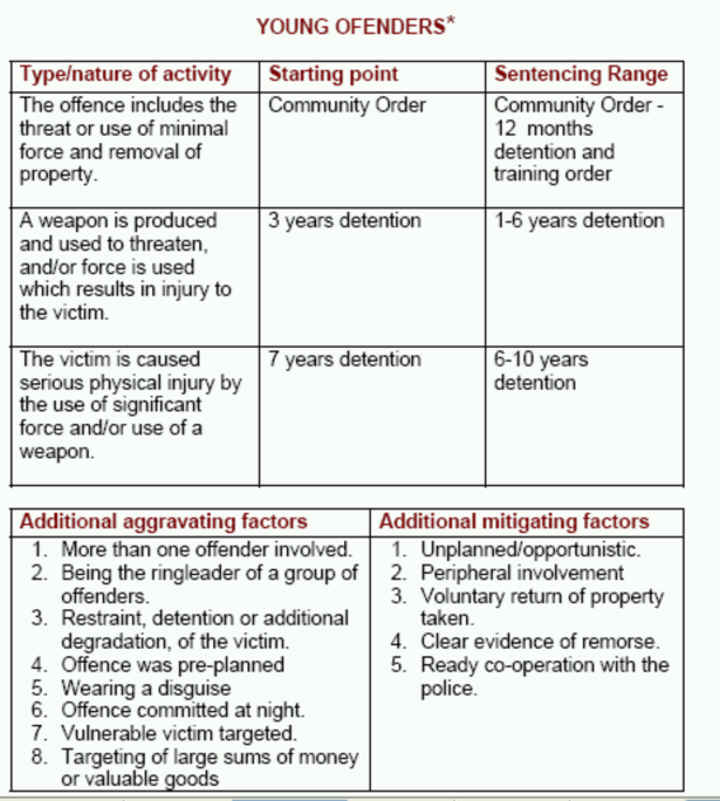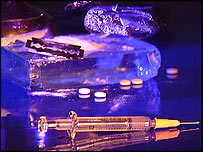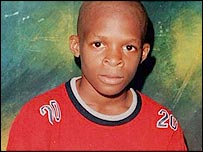Background
- During the
evaluation of Year 1 of Harrow Children’s Fund (HCF), the
issue of safety repeatedly arose. This was linked by a large
number of children in touch with projects to bullying and,
to a lesser extent, to fears of personal violence (attack,
mugging). But, beyond this, several projects described young
people’s appreciation of what they offered in terms of
more general “places of safety”, detached from the
dangers of everyday life. Some went further, to identify
danger in terms of traditional contexts – school, home,
neighbourhood, or relationships – family, community, which
had let children down.
- The
implications of this were discussed by a small steering
group (see Annex A). It seemed to us that the issue of
safety in the broadest sense could be a good focus for
participation by children in the HCF evaluation for a number
of reasons:
1)
It is a genuine concern of children themselves, not a
policy issue imposed on them
2)
At the same time it relates to key local policy concerns,
such as safeguarding children, and crime prevention
3)
Exploring it further could throw light on key issues for
mainstreaming – is part of the value of projects their detachment
from the mainstream? How do we preserve that value, while
ensuring the continuation of the work?
4)
Equally, it may have implications for the extent to which
extended schools can provide the sort of safety children are
looking for, and
5)
It could pinpoint priorities for action by Harrow after
the Programme ends.
- Before
designing our Safety Project, we contacted the (then)
Children’s Rights Director for England, Roger Morgan. In
July 2004, he had published the results of a consultation he
had carried out with 25 groups of children and young people
who had all had experience of living away from their natural
parents.
His findings have been reported in the social work press
with surprise: children in these situations were
concerned about abuse from strangers. But risks in order of
importance were listed as:
1)
bullying
2)
road accidents
3)
illness, and
4)
being abducted.
The
greatest protections against risk were identified as
someone you trust to talk to, and being listened to and taken
seriously – “Listen to the quiet ones too!”
- Although Roger
Morgan’s studies covered a wider age range of children
than ours, and children with a particular experience (of
living away from home), his results provided us with
interesting comparative material. His comments on
methodology – in particular, the need to keep sessions
with the young people flexible and questions open-ended –
were also helpful.
Method
- The methodology
for the project was agreed by HCF’s Management Committee
in September 2004. It was decided that, at the beginning of
the school year 2004-05, all HCF projects would be contacted
for the names of young people interested in becoming part of
the core group of “young researchers” who would firstly
explore the issue of safety together, and then be trained to
survey the views of others using simple checklists
(“Opinion Finders”). At the same time, an expanded
version of the checklist would be posted on the new
Harrowkidz website, and responses would be invited by
everyone visiting the site. A sample of the “Opinion
Finders”, and the website questionnaire are attached as
Annexes B and C.
- The Young
Researchers group (six regular participants aged 9-12) met
throughout the winter for discussion, training and fun. In
January 2005, members of the group were lent digital
cameras, and asked to photograph places, people, anything
which reflected their ideas of what was “safe” or
“unsafe”. A selection of these photos was exhibited in
the Civic Centre. The group carried out their “Opinion
Finders” surveys at school, in holidays and weekends,
interviewing their friends, classmates, and other young
people attending HCF projects. Project providers were also
interviewed in some cases. About 70 responses were collected
in this way.
- The Young
Researchers also attended a 3-day drama workshop in February
2005 on the subject of safety, and created and edited a DVD
– also exhibited at the Civic Centre. Both the DVD and the
photos mentioned above are now being widely used at events
in the borough. The young people were rewarded for their
participation in the 6-month project by a fun celebration
event, and a trip to Thorpe Park.
- The extended
checklist was posted on Harrowkidz website between October
2004 and the present. Forty responses were received by March
2005. Those who stated their age (25%) were between 9 and 13
years old.
Results
- The results
recorded here are derived from participant observation of
the Young Researchers group, and statistical analysis of the
two sets of questionnaire responses. We do not make any
claims about the “scientific” quality of the data: all
participants were in effect self-selected, and the rather
negative feel of some of responses to the website survey may
reinforce the view that it appealed to people with problems,
rather than a random sample of young people. Nonetheless,
the volume of material we collected suggests that the issues
raised are of genuine concern to at least a significant
sub-set of Harrow’s young people. We also cannot be
certain about the age range covered: the likelihood is that
Opinion Finders reflect the views of younger children (up to
13), while the website may have attracted older respondents.
- The results
which follow are broken down into three sections: Young
Researchers, Opinion Finders, and Harrowkidz Website. They
relate simply to the views of young people which were
revealed by the project. An evaluation of the project in
terms of the wider goals of the Children’s Fund will be
covered in the end-year Evaluation Report.
YOUNG RESEARCHERS
- The Young
Researchers (all boys, apart from one girl who attended the
drama workshop) appeared to find it easy to relate to the
subject of the project. Both they (and their parents who
brought them to the sessions) took attendance seriously; and
although each meeting included plenty of fun, the young
people were impressive in the extent to which they were
prepared to discuss and learn at quite long evening
meetings.
- They were
invited to explore and explain their own views about safety
from the very beginning, through a range of activities. It
was impossible for us to disentangle the source of their
views with the resources available to us, but very broadly,
they seemed to fall into three or four categories:
Ø
Fundamental fears and frightening fantasies
experienced by all or most children – of the dark, and dark
places, of being left alone. One of these – fear of kidnap –
which occurred quite frequently, may also relate to stories of
abductions in the press.
Ø
Fears generated by national or world events
reported in the press, involving danger, guns or violence. One
participant, for example, said that beaches were no longer safe.
Ø
Practical concerns for safety instilled by school
and parents: about crossing the road carefully, standing back
from the railway platform edge, paying attention to “hazard”
signs.
Ø
And mixed with all these, many insights into what
it is like to be a young person living in Harrow just now.
- Home and
family, especially Mum, seemed important to all these young
people, and it was clear that their sense of security was
fixed in the familiar. Pluses – things that made them feel
safe – included their siblings, extended family, their
houses, family cars, household objects, holidays, favourite
music, football. A list of “safe” things photographed by
one young researcher included his house, front room, Mum and
friend, and bathroom. He commented that his kitchen, DVDs,
Dad and the garden should also be included! One photographed
his Mum, and said, “ – she’s very nice, comforts and
cheers me up”; while another described his garden as safe
because, “Mum is watching from the kitchen.”
- Perhaps less
predictable were their perceptions of things that are unsafe
in their lives. Important worries included the following:
Kidnapping
has already been mentioned. No-one knew anybody who had been
abducted, but it was generally felt to be a real risk.
Dark
alleyways
A
broad concern with pollution was related to passive
smoking, cars, graffiti, vandalism and rubbish in the streets. Litter
was also mentioned by most, but opinions differed as to how
seriously litter should be treated.
Health
concerns included poor diet, smoking and substance abuse and
alcohol. These young people were against them all.
They
were equally severe about places serving alcohol. Clubs and pubs
that encouraged heavy drinking were associated with
noisy, dangerous gangs; and casinos, with pointless, dangerous
waste of money.
Dangerous
gangs were also mentioned as one of
the hazards of Harrow bus station - again, sometimes in
connection with drugs, alcohol, and mobile ‘phone theft.
Racism
was mentioned as a problem by some, and – conversely – a
“multicultural” setting was seen as a safe one.
- A few issues
were seen as particularly complicated: policing was
one. While the police could be reassuring in some contexts
– for example, outside pubs at night – their obvious
presence in schools was seen as threatening and
heavy-handed. Some held the general view that the “police
will not help you”, even when an obvious crime is being
committed.
- Most saw school
as a fundamentally safe place, and trusted the adults there
to prevent kidnap or other violence. On the other hand,
bullying was generally said to be a problem, although there
had been little personal experience of it.
- As one part of
the preparation for surveying the views of other young
people, the Young Researchers developed their own list of
qualities needed for the task. These were:
Ø
Have confidence – be yourself
Ø
Be polite, truthful, attentive, professional and
mature
Ø
Don’t be afraid, and don’t scare people
Ø
Listen, but have your own ideas
Ø
Make it interesting
Ø
Be prepared – know what you’re going to say
- Overall, the
group thought the project had been very successful. They
said that they had enjoyed learning about what concerned
other people, and thinking about how the environment could
be improved, and young people’s worries about safety
solved. They also said that they had learned a lot about
Harrow, Harrow Council and the Youth Council as a result of
the project.
OPINION FINDERS
- The following
statements are based on the completed or partially-completed
questionnaires (about 70) collected by the young
researchers. Often, the numbers of respondents replying to
any one question are small: proportions which are stated
relate to the number of people responding to the individual
question. Few very young children were contacted: most
respondents would be in the 9-13 age range.
- Relationships
Half the (few) respondents to this question
felt that they could talk to their parents when worried
Virtually
all respondents felt that they felt most safe at home
Seven
out of ten felt that they had someone to turn to when they were
worried; even more, that they have someone they can trust, to
talk to
Virtually
all had an adult to talk to about their problems
- Harrow – the streets and the
environment
Most respondents to this question felt that,
overall, Harrow was a safe place to live
Most
felt that street lighting was an issue – there should be more
Two-thirds
agreed or agreed strongly with the proposition that litter and
graffiti are a problem in Harrow
Virtually
all respondents to this question felt that pollution in Harrow
is dangerous
There
were no strong views about road safety in Harrow
The
majority of a small number of respondents felt that ill-health
was a problem for the borough
- Safe places
All
respondents to this question feel safe at home
Two-thirds
feel that drunks and pubs are a problem in the borough
One-half
believe that racism is an issue
Most
believe strongly that public transport is safe
Two-thirds
feel that the police help them to feel safe
About
half feel that there are safe places to go after school
- School
Three-quarters of the children who answered
this question said that they could always talk to their teacher
when they were worried
More than half feel safe at school
But three out of five think that bullying is a
problem at their school
And more than half think that most children
have been bullied at some time
- Crime
Less
than half of the respondents to this question felt that Harrow
is safer than other parts of London
Most
agreed that there is too much crime in Harrow, and that it is a
problem
But
very few thought that crime was a problem where they lived
Half
knew someone who had been a victim of crime
About
half thought that teenagers could be a problem
HARROWKIDZ WEBSITE
25.
Again, although about 40 responses were collected from
the website up to March 2005, many respondents only answered
those questions of most concern to them.
- Safe places
27 respondents felt safe at home, or at home
with their family; no-one felt unsafe. Others wrote about
supportive friends and family, and feeling safe indoors, when
the family is at home; 3 mentioned feeling unsafe when the
family wasn’t home
Familiar
places and people, lighting, plenty of company, friends,
respected institutions like places of worship or after-school
clubs all inspired confidence, as did traffic control measures.
Locks and dogs were also appreciated.
- Unsafe places
Most unsafe places were “outside”, and 29
people knew of some. They included Harrow bus station, parks and
alleys
Unsafe
places were associated with late night noise and rowdy kids;
drunks; drug use; bullies; crime of all kinds; fights, gangs;
people in hiding, and kidnap
They
also involve physical danger – falling over, falling on
railway lines, traffic
- “I feel safe when...”
“I’m at home, with family and friends, in
a crowd, when the sun is shining, somewhere familiar and in good
lighting”
“When
I’m inside and nice and warm, in bed”
“With
teachers, at school, playing football”
- Things that make me feel unsafe
Bad
language and shouting, people arguing in the street
Strangers, being alone in the house, dark and
lonely streets and alleys, my back garden at night, deserted
places
Fights,
family fights
Gangs
and drunks
- People who are the best protection
against danger
Parents, the wider family and friends were all
mentioned by numerous respondents. Older people could generally
be relied on to help. One commented simply that, “they are all
helpful, but you don’t want them escorting you everywhere”
Teachers/school,
and neighbours were also frequently listed
The
police were listed by six respondents, but had also been listed
as “dangerous” by one
- Bullying
27
respondents were worried about bullying; 7 were not
A
few wrote that it had happened to them: one boy, for example,
was stigmatised for getting on with the girls at his school
But
many respondents knew how it would feel: it made them scared;
they would feel sad, deceived, worried, upset, lonely,
frightened, let down and hurt. Their self-esteem would be
damaged, and it could lead to dangerous violence
Findings
32.
The consistency of the findings across all three samples
is clear. The young people contacted during this project
generally find security within their homes and immediate family,
their neighbours and friends. The only negative points concern
some family fights, being alone at home, and some “dodgy”
neighbours. Neighbourhoods, however, can be dangerous:
alleyways, environmental and industrial dangers can be
compounded – in young minds – by people lying in wait. In
spite of the statistics, crime of all kinds is seen as a
problem. The role of the police is on balance seen as a
positive, but clearly some respondents remain to be convinced
that the police are on their side.
- Poor street lighting, graffiti,
vandalism and rubbish are taken seriously by Harrow’s
young people who identify them with the uncertainty and
social instability which they fear. Drunkenness and loud
crowds around pubs and clubs are almost universally
disliked.
- Schools and teachers receive a
generally very positive response from the young people. But
– in spite of this – school holds one of their chief
fears. Very few seem to have had direct experience of
bullying, but most fear it, and can describe in graphic
terms what it would mean to them.
Conclusion
- This project was to a large extent
experimental. It demonstrated beyond doubt the feasibility,
and the value of involving young people in the evaluation of
social programmes which are of direct concern to their
lives. Our young researchers worked hard and enjoyed the
experience of examining their own lives, and the lives of
their contemporaries in Harrow. They had important things to
say about the streets, schools and homes they experience
every day.
Annex
C: Website questionnaire
1.
Where do you feel safe? What are safe places for you?
2.
Are some places dangerous? In what ways?
3.
When do you feel safe?
4.
What are the things that make you feel unsafe?
5.
Which people are the best protection against danger
·
Family?
– Who exactly...
·
School?
·
Friends?
·
Neighbours?
·
A
particular teacher, or other adult?
6.
What people do you feel really safe with?
7.
Who do you trust, for good advice and support?
8.
Who can you talk to, if you feel worried or frightened?
9.
Does bullying happen/worry you? What’s it like
10.Are
there things about Harrow which make you feel
safe/unsafe?

Roger Morgan (2004) Safe
from Harm: Children’s views on keeping safe,
Commission for Social Care Inspection
From Track Off: www.teachingzone.org/pdf/15-16Phselp.pdf
Railway
crime is a big problem for the people who run the railway tracks
and the trains. It takes place at
railway
stations, on trains and on railway tracks.
At
railway stations, crimes include stealing cars and from cars,
hurting station users or staff, theft from
customers
and damaging station buildings.
On
trains, crimes include stealing peoples’ suitcases, hurting
passengers or train staff and damage by
football
hooligans.
On
railway tracks, crimes include walking on or across the railway
line without using an official crossing,
throwing
things at trains, putting things on the track in front of trains,
dumping rubbish at the side of tracks
and
damaging or spraying graffiti on railway buildings.
These
are some of the shocking facts about railway crime:
•
Half of all damage to trains is usually caused by children between
the ages of 5 and 16 throwing
rocks
or bricks from the side of the tracks or putting things on the
tracks.
•
4 million objects are thrown at trains every year.
•
640,000 objects are put on the tracks in front of trains every
year.
•
It costs the railway industry £260 million every year to repair
damaged trains and tracks,
replace
staff who may have been shocked or injured and in delays to
trains.
•
It is estimated 27 million crimes of going on the railway tracks
without permission (trespass)
are
carried out each year - 17million of these crimes are committed by
adults and 10 million
by
children under the age of 16.
•
It is estimated these crimes of going on the railway tracks
without permission are carried out
by
1 million adults and 1.3 million children under the age of 16.
British
Transport Police is a special police force that deals with all
railway crime.
•
British Transport Police will visit the homes and schools of young
children who carry out acts
of
railway crime.
•
Walking on or near the tracks without permission, except at an
official crossing, is a crime - people can
be
fined up to £1,000.
•
Throwing things at trains is a crime - people can be sent to
prison for life for a serious offence.
•
Putting things on the track that can damage or derail a train is a
crime - people can be sent to prison
for
life for a serious offence.
Going
on or near the railway tracks, either to take a short cut or to
carry out other acts of
railway
crime, is very dangerous.
•
A train cannot stop quickly or swerve like a car. Even a slow
moving freight train cannot stop quickly as it
can
weigh up to 2,000 tonnes.
•
At a speed of 225 kilometres an hour an inter-city train can
travel over 2,000 metres (20 football pitches)
in
7 seconds.
•
If the driver puts on his emergency brakes it would take 2
kilometres for an inter-city train to stop.
•
Track switching points can trap feet causing serious injury or
trap someone in front of a train.
•
Electricity from overhead cables on the railway can ‘jump’
From
Sentencing Guideline Council Draft Report 2005:
For each of the three categories, three
levels of seriousness have been identified based on the extent of
force used or threatened. For each level of seriousness a
sentencing range and a starting point within that range have been
identified. Adult and youth offenders are distinguished and the
guideline provides for them as separate groups.

 How
can I stop the guns?
How
can I stop the guns?







 Operation
Trident is the Metropolitan Police's unit which deals with gun related
incidents within London's black community. For more information, go to:
Operation
Trident is the Metropolitan Police's unit which deals with gun related
incidents within London's black community. For more information, go to:  crime
campaign, whose 'Why?' video inspired the Because... youth crime project, go to:
crime
campaign, whose 'Why?' video inspired the Because... youth crime project, go to:


 Find
out more at
Find
out more at 


